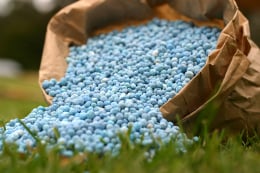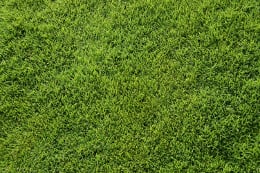How to Fertilize Your New Bermudagrass Seed Lawn
Planting your new lawn from Bermuda Grass seed requires soil nutrients for good growth in addition to water and sunlight. However, not every soil is ideal for providing adequate nutrition for Bermuda grass seeds, especially the low quality soils that typically surround new construction. Fertilizing at the right time of year is necessary for adding supplemental nutrients to help your Bermudagrass maintain its optimum health and beauty after it is established.
Most of the nutrients your Bermuda grass seed needs are already supplied to the roots of your grass in small, trace amounts through natural occurring soil processes. However, Bermudagrass lawns, as with any grass lawn, require three especially important nutrients—nitrogen (N), phosphorus (P) and potassium (K)—in larger quantities than are readily available in most soils. Lawn fertilizers are formulated to provide these nutrients at higher levels than are typically available naturally within most soils.
All commercial fertilizers display three numbers somewhere on their bag, representing its particular combination of nitrogen, phosphorus and potassium. These numbers are the percentages of these nutrients in the fertilizer and are separated by dashes, such as 4-6-4 (or N-P-K). In the example of a 4-6-4 (totaling 14%), the remaining 86% of the fertilizer is made up of filler material (and sometimes other trace ingredients such as calcium, magnesium, iron, etc.) meant to give you the bulk needed to spread the fertilizer evenly over your yard. In the case of an organic based fertilizer, the additional weight is not filler, but organic matter, a much needed soil component in sandy and clayey soils.
Newly seeded Bermudagrass seed lawns need nitrogen, phosphorus and potassium in a much different combination than an already established lawn, and thus most fertilizers are not formulated to meet the needs of a newly seeded Bermudagrass lawn. When planting your new Bermudagrass seeds make sure to select a "starter" fertilizer, or an organic, "slow-release" fertilizer. Do not use "weed & feed" fertilizers intended for use on established lawns, as these include weed preventing chemicals in combination with the fertilizer that can severely damage or kill new seedlings.

About 4-8 weeks after the Bermudagrass seeds germinate you should fertilize your grass again. Do not continue to use starter fertilizer for this second application. The higher phosphorus content of starter fertilizers is an important nutrient right after your grass seed has germinated, but once established, your lawn no longer needs phosphorus at such a high rate. Moreover, phosphorus runoff is a contributor to surface and groundwater pollution. Instead, use either a more traditional type fertilizer, or an organic, slow-release fertilizer such as an 18-1-8 formulation which is better suited for an existing lawn. Use your seed spreader to apply the fertilizer in two directions. Make sure not to over-apply by following the application rate provided on the fertilizer’s packing. Sweep any fertilizer granules that end up on the sidewalk or driveway back onto the bluegrass lawn. Water the lawn immediately after fertilizing to allow the nutrients to filter down through the soil to the roots.



